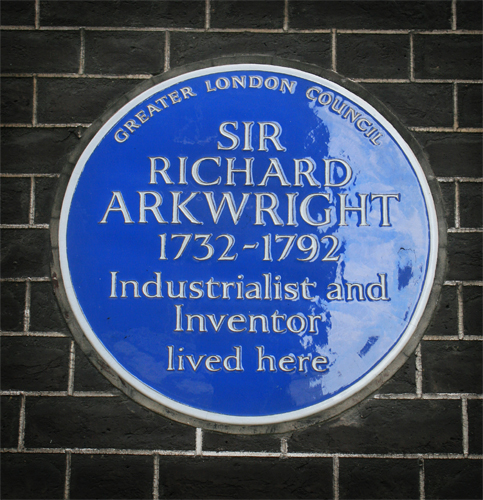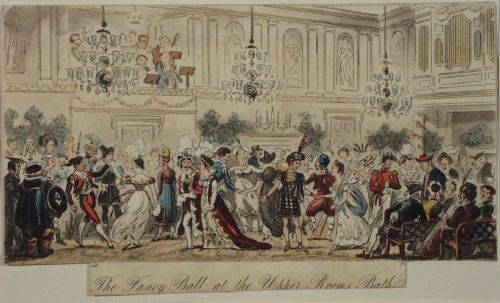|
1771 In Great Britain
Events from the year 1771 in Great Britain. Incumbents * Monarch – George III * Prime Minister – Frederick North, Lord North (Tory) Events * 22 January – Spain cedes the Falkland Islands to Britain. * 15 March – Society of Civil Engineers first meets (in London), the world's oldest engineering society. * 12 July – first voyage of James Cook (begun 1768): anchors in The Downs, and Captain Cook goes ashore at Deal, Kent, following his global circumnavigation. * 8 August – first recorded town cricket match played at Horsham; Horsham Cricket Club formed here soon after 1806. * 17 August – Edinburgh botanist James Robertson makes the first recorded ascent of Ben Nevis. * 30 September – Bath Assembly Rooms completed. * 2 October – Prince Henry, Duke of Cumberland and Strathearn, brother to the King, marries a commoner, the widow Anne Horton, in Mayfair, precipitating the Royal Marriages Act 1772. * 16 November – Several rivers flood in northern England, destro ... [...More Info...] [...Related Items...] OR: [Wikipedia] [Google] [Baidu] |
Horsham Cricket Club
Horsham Cricket Club is one of the oldest cricket clubs in the world and represents the Sussex market town of Horsham in the Sussex Cricket League, along with Roffey Cricket Club. Although cricket was played in Horsham before 1768, the first recorded game of a town side was on 8 August 1771, and Horsham Cricket Club was created soon after 1806. The club has played various locations over the years, before settling at their present ground in 1851. Cricketfield Road Horsham is on 'Cricketfield Road' and the Ground is known as the Cricketfield Road Ground. The two ends are called the Town End and the Railway End. Horsham's second ground is named after former President Dr. John Dew, which lies adjacent to the main square. First XI Horsham runs four Saturday men's teams, one Sunday men's and two women's teams. Horsham have won the Sussex League title a record eight times and the Cyril Snell trophy a record 11 times (including six times in seven years between 2001 and 2006); most ... [...More Info...] [...Related Items...] OR: [Wikipedia] [Google] [Baidu] |
Richard Arkwright
Sir Richard Arkwright (23 December 1732 – 3 August 1792) was an English inventor and a leading entrepreneur during the early Industrial Revolution. He is credited as the driving force behind the development of the spinning frame, known as the water frame after it was adapted to use Hydropower, water power; and he patented a rotary carding engine to convert raw cotton to 'cotton lap' prior to spinning. He was the first to develop factories housing both mechanised carding and spinning operations. Arkwright's achievement was to combine power, machinery, semi-skilled labour and the new raw material of cotton to create mass-produced yarn. His organisational skills earned him the accolade "father of the modern industrial factory system," notably through the methods developed in his mill at Cromford, Derbyshire (now preserved as part of the Derwent Valley Mills World Heritage Site). Life and family Richard Arkwright was born in Preston, Lancashire, Preston, Lancashire, England o ... [...More Info...] [...Related Items...] OR: [Wikipedia] [Google] [Baidu] |
Industrial Revolution
The Industrial Revolution, sometimes divided into the First Industrial Revolution and Second Industrial Revolution, was a transitional period of the global economy toward more widespread, efficient and stable manufacturing processes, succeeding the Second Agricultural Revolution. Beginning in Kingdom of Great Britain, Great Britain around 1760, the Industrial Revolution had spread to continental Europe and the United States by about 1840. This transition included going from craft production, hand production methods to machines; new Chemical industry, chemical manufacturing and Puddling (metallurgy), iron production processes; the increasing use of Hydropower, water power and Steam engine, steam power; the development of machine tools; and rise of the mechanisation, mechanised factory system. Output greatly increased, and the result was an unprecedented rise in population and population growth. The textile industry was the first to use modern production methods, and textiles b ... [...More Info...] [...Related Items...] OR: [Wikipedia] [Google] [Baidu] |
Scottish Geographical Magazine
Scottish usually refers to something of, from, or related to Scotland, including: *Scottish Gaelic, a Celtic Goidelic language of the Indo-European language family native to Scotland *Scottish English *Scottish national identity, the Scottish identity and common culture *Scottish people, a nation and ethnic group native to Scotland * Scots language, a West Germanic language spoken in lowland Scotland *Symphony No. 3 (Mendelssohn), a symphony by Felix Mendelssohn known as ''the Scottish'' See also *Scotch (other) *Scotland (other) *Scots (other) *Scottian (other) *Schottische The schottische is a partnered country dance that apparently originated in Bohemia. It was popular in Victorian-era ballrooms as a part of the Bohemian folk-dance craze and left its traces in folk music of countries such as Argentina (Spanish ... * {{disambiguation Language and nationality disambiguation pages ca:Escocès ... [...More Info...] [...Related Items...] OR: [Wikipedia] [Google] [Baidu] |
Great Flood Of 1771
The Great Flood of 1771 affected several rivers, including the River Tyne, Tyne, River Tees, Tees, River Wear, Wear and River Eden, Cumbria, Eden and settlements across Northern England from 16 and 17 November 1771. Its cause was a sudden thaw of the ice in upper Teesdale, a cloud burst over the Pennines and a continuous period of rain. At Newcastle upon Tyne the middle arch and two of the arches near the Gateshead side of the Tyne Bridge collapsed in the early hours of November 17. Like many bridges of the time there had been houses and shops on the bridge. Upstream, most of the village of Styford Bridge, Styford on the north bank was destroyed. In total, 25 people died and thirteen or fourteen bridges, including Hexham Bridge, were destroyed on the North, South and main Tyne rivers. On the River Wear in the city of Durham, England, Durham three arches of Elvet Bridge were destroyed, and Prebends Bridge of 1574 was swept away. Further downstream the city's corn mill, Corn Mil ... [...More Info...] [...Related Items...] OR: [Wikipedia] [Google] [Baidu] |
Royal Marriages Act 1772
The Royal Marriages Act 1772 (12 Geo. 3. c. 11) was an Act of Parliament, Act of the Parliament of Great Britain which prescribed the conditions under which members of the British royal family could contract a valid marriage, in order to guard against marriages that could diminish the status of the royal house. The right of veto vested in the sovereign by this Act provoked severe adverse criticism at the time of its passage. It was repealed as a result of the 2011 Perth Agreement, which came into force on 26 March 2015. Under the Succession to the Crown Act 2013, the first six people in the line of succession need permission to marry if they and their descendants are to remain in the line of succession. Provisions The act said that no descendant of George II of Great Britain, King George II, male or female, other than the issue of princesses who had married or might thereafter marry "into foreign families", could marry without the consent of the reigning Monarchy of the Unite ... [...More Info...] [...Related Items...] OR: [Wikipedia] [Google] [Baidu] |
Mayfair
Mayfair is an area of Westminster, London, England, in the City of Westminster. It is in Central London and part of the West End. It is between Oxford Street, Regent Street, Piccadilly and Park Lane and one of the most expensive districts in the world. The area was originally part of the manor of Eia and remained largely rural until the early 18th century. It became well known for the annual May Fair that took place from 1686 to 1764 in what is now Shepherd Market. Over the years, the fair grew increasingly downmarket and unpleasant, and it became a public nuisance. The Grosvenor family (who became Dukes of Westminster) acquired the land through marriage and began to develop it under the direction of Thomas Barlow. The work included Hanover Square, Berkeley Square and Grosvenor Square, which were surrounded by high-quality houses, and St George's Hanover Square Church. By the end of the 18th century, most of Mayfair had been rebuilt with high-value housing for the ... [...More Info...] [...Related Items...] OR: [Wikipedia] [Google] [Baidu] |
Anne Horton
Anne, Duchess of Cumberland and Strathearn (née Luttrell, later Horton; 24 January 1743 – 28 December 1808) was a member of the British royal family, the wife of Prince Henry, Duke of Cumberland and Strathearn. Her sister was Lady Elizabeth Luttrell who was her companion and managed her home. Early life Anne was born in Marylebone, London and was baptized on 17 February 1742 at St Marylebone, Westminster, Middlesex, England. although another source says 24 January 1743. She was the daughter of Simon Luttrell, later first Earl of Carhampton, and his wife, Judith Maria Lawes, daughter of Sir Nicholas Lawes. Her younger sister and devoted companion, Elizabeth, was born on 3 February 1744 in London. Her father was a Member of the House of Commons before being created Baron Irnham in 1768, Viscount Carhampton in 1781 and Earl of Carhampton in 1785. Marriages Anne was first married to a Derbyshire gentleman, Christopher Horton (sometimes spelt Houghton) of Catton Hall, ... [...More Info...] [...Related Items...] OR: [Wikipedia] [Google] [Baidu] |
Prince Henry, Duke Of Cumberland And Strathearn
Prince Henry, Duke of Cumberland and Strathearn (Henry Frederick;He is called simply "(His Royal Highness) Prince Henry" in the ''London Gazette'8 September 1761 /ref> – 18 September 1790) was the sixth child and fourth son of , and |
Bath Assembly Rooms
The Bath Assembly Rooms, designed by John Wood, the Younger in 1769, are a set of assembly rooms located in the heart of the World Heritage Site, World Heritage City of Bath, Somerset, Bath in England which are now open to the public as a visitor attraction. They are designated as a Grade I Listed building (United Kingdom), listed building. During the Georgian era Bath became fashionable, and the architects John Wood, the Elder, and his son laid out new areas of housing for residents and visitors. Assembly rooms had been built early in the 18th century, but a new venue for Ball (dance), balls, concerts and gambling was envisaged in the area between Queen Square (Bath), Queen Square, The Circus, Bath, The Circus and the Royal Crescent. Robert Adam submitted a proposal that was rejected as too expensive. John Wood, the Younger raised funding through a tontine, and construction started in 1769. The new or upper assembly rooms opened with a grand ball in 1771 and became the hub of fa ... [...More Info...] [...Related Items...] OR: [Wikipedia] [Google] [Baidu] |
Ben Nevis
Ben Nevis ( ; , ) is the highest mountain in Scotland, the United Kingdom, and the British Isles. Ben Nevis stands at the western end of the Grampian Mountains in the Highland region of Lochaber, close to the town of Fort William. The mountain is a popular destination, attracting an estimated 150,000 visitors a year, around three-quarters of whom use the Mountain Track from Glen Nevis. The mountain has hosted a foot race since 1898. The cliffs of the north face are among the highest in Scotland, providing classic scrambles and rock climbs of all difficulties for climbers and mountaineers. They are also the principal locations in Scotland for ice climbing. The cliffs of the north face can be viewed from the Charles Inglis Clark Memorial Hut, a private alpine hut. The summit is above sea level and is the highest land in any direction for . The summit is a stony plateau (a felsenmeer). It features a number of monuments and the ruins of an observatory which was continu ... [...More Info...] [...Related Items...] OR: [Wikipedia] [Google] [Baidu] |



.jpg)


